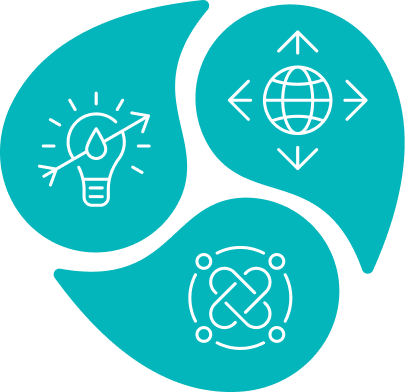During the showcase projects, the resource circulation sanitation (RCS) system served approximately 80 people per month which led to about 50,000 L per year of water conservation. The energy conservation is estimated to be about 500 – 700 kWh per year considering the requirements for the maintenance as well as provision and treatment of water for sanitation applications.
The treatment showed efficiency in increasing the fertilizing potential of urine by modifying its nitrogen profile. In particular, the controlled initial addition of nitrifying microorganisms can optimize and sustain the ratio of ammonium to nitrate at 1:1 within the retention time. Moreover, pH reduction as a result of nitrification led to reducing ammonia losses as gas to about 40% along with odor production.
This treatment method also enhanced the feces composting process. After the retention time, about 90% of the total organic carbon has been degraded by providing a more favorable condition for heterotrophic microorganisms. This provides compost with a sustainably constant C:N ratio near 30, making it suitable to be utilized as a soil conditioner. Furthermore, this method was useful in the efficient removal of fecal indicators. In particular, no Escherichia coli and total coliforms have been detected after the retention time. These results yield that the system can produce clean and safe material to be utilized as fertilizer or soil conditioner.
Results of white radish cultivation show that there was no statistically significant difference in nutrient release in soil samples treated with the products of RCS and commercial fertilizer. Thus, the water and sugar content along with the accumulated nutrients in leaves and roots of white radish plants cultivated in soil treated with the RCS produces was 20% – 30% more than the other ones.
The sustainability of the RCS system was proved in this project by its efficiency in reducing water and energy consumption along with recycling urine and feces to be utilized as fertilizer and soil conditioner. The benefits acquired by fertilizer production, water-saving, and higher agricultural productivity are substantial.
The local sanitation committee was active and played an important role in the social promotion of the system. The trained members of the committee involved local people to regulate the maintenance process and transfer the knowledge and awareness about sustainable sanitation in the community. Consequently, the committee could practice creating a sense of ownership and social responsibility for the presented new concept of sanitation.
Estimated annual production and utilization of 500 kg of treated urine and feces resulted in an additional cost-saving for fertilizers of around 500 USD/year. As for agricultural production, considering the cultivation of white radishes in a typical 500m2 tract of farmland and a single annual harvest, the financial benefit from increased agricultural production using this system can be estimated as 400 USD/year.
Although it was traditionally and socially acceptable to use urine as a fertilizer in Korea, modern norms have undercut this approach. The scientific modifications undertaken in this system make it possible to overcome social and public health challenges and implement this otherwise beneficial system. Considering these benefits, although the visitors and users could access flushing toilets located nearby, 98% of them preferred using the RCS. Moreover, no direct contact with sanitary wastes makes the system safe, preventing the spread of infections like COVID19.
The system employs a nature-based biological treatment for treating urine and feces, meets the criteria of WHO guidelines for a “safe sanitation system,” and can be considered a step ahead of SDGs 1, 2, and 6. It has been nominated for and won several national and international awards including “Energy Globe Republic of Korea National Award 2019” and “Leaving No One Behind Innovation Award 2019.”

 Case study
Case study